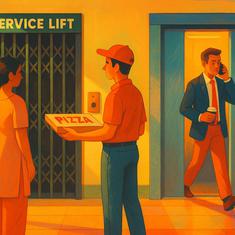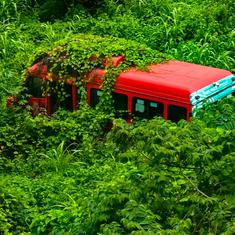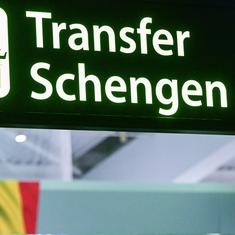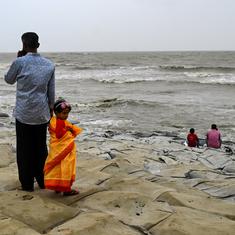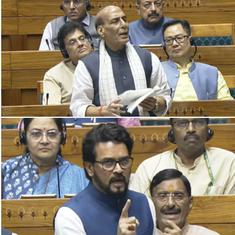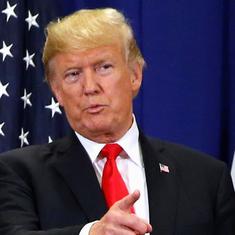According to a UN report, around 1.2 billion people, or almost one fifth of the world’s population, live in areas where water is physically scarce and another 1.6 billion people, or nearly one quarter of the world’s population, face economic water shortage. They lack basic access to water. The criticality of the water situation across the world has in fact given rise to speculations over water wars becoming a distinct possibility in the future. In India the problem is compounded, given the rising population and urbanization. The Asian Development Bank has forecast that by 2030, India will have a water deficit of 50%.
Water challenges in urban India
For urban India, the situation is critical. In 2015, about 377 million Indians lived in urban areas and by 2030, the urban population is expected to rise to 590 million. Already, according to the National Sample Survey, only 47% of urban households have individual water connections and about 40% to 50% of water is reportedly lost in distribution systems due to various reasons. Further, as per the 2011 census, only 32.7% of urban Indian households are connected to a piped sewerage system.

Any comprehensive solution to address the water problem in urban India needs to take into account the specific challenges around water management and distribution:
Pressure on water sources: Rising demand on water means rising pressure on water sources, especially in cities. In a city like Mumbai for example, 3,750 Million Litres per Day (MLD) of water, including water for commercial and industrial use, is available, whereas 4,500 MLD is needed. The primary sources of water for cities like Mumbai are lakes created by dams across rivers near the city. Distributing the available water means providing 386,971 connections to the city’s roughly 13 million residents. When distribution becomes challenging, the workaround is to tap ground water. According to a study by the Centre for Science and Environment, 48% of urban water supply in India comes from ground water. Ground water exploitation for commercial and domestic use in most cities is leading to reduction in ground water level.
Distribution and water loss issues: Distribution challenges, such as water loss due to theft, pilferage, leaky pipes and faulty meter readings, result in unequal and unregulated distribution of water. In New Delhi, for example, water distribution loss was reported to be about 40% as per a study. In Mumbai, where most residents get only 2-5 hours of water supply per day, the non-revenue water loss is about 27% of the overall water supply. This strains the municipal body’s budget and impacts the improvement of distribution infrastructure. Factors such as difficult terrain and legal issues over buildings also affect water supply to many parts. According to a study, only 5% of piped water reaches slum areas in 42 Indian cities, including New Delhi. A 2011 study also found that 95% of households in slum areas in Mumbai’s Kaula Bunder district, in some seasons, use less than the WHO-recommended minimum of 50 litres per capita per day.
Water pollution and contamination: In India, almost 400,000 children die every year of diarrhea, primarily due to contaminated water. According to a 2017 report, 630 million people in the South East Asian countries, including India, use faeces-contaminated drinking water source, becoming susceptible to a range of diseases. Industrial waste is also a major cause for water contamination, particularly antibiotic ingredients released into rivers and soils by pharma companies. A Guardian report talks about pollution from drug companies, particularly those in India and China, resulting in the creation of drug-resistant superbugs. The report cites a study which indicates that by 2050, the total death toll worldwide due to infection by drug resistant bacteria could reach 10 million people.
A holistic approach to tackling water challenges
Addressing these challenges and improving access to clean water for all needs a combination of short-term and medium-term solutions. It also means involving the community and various stakeholders in implementing the solutions. This is the crux of the recommendations put forth by BASF.
The proposed solutions, based on a study of water issues in cities such as Mumbai, take into account different aspects of water management and distribution. Backed by a close understanding of the cost implications, they can make a difference in tackling urban water challenges. These solutions include:
Recycling and harvesting: Raw sewage water which is dumped into oceans damages the coastal eco-system. Instead, this could be used as a cheaper alternative to fresh water for industrial purposes. According to a 2011 World Bank report, 13% of total freshwater withdrawal in India is for industrial use. What’s more, the industrial demand for water is expected to grow at a rate of 4.2% per year till 2025. Much of this demand can be met by recycling and treating sewage water. In Mumbai for example, 3000 MLD of sewage water is released, almost 80% of fresh water availability. This can be purified and utilised for industrial needs. An example of recycled sewage water being used for industrial purpose is the 30 MLD waste water treatment facility at Gandhinagar and Anjar in Gujarat set up by Welspun India Ltd.
Another example is the proposal by Navi Mumbai Municipal Corporation (NMMC) to recycle and reclaim sewage water treated at its existing facilities to meet the secondary purposes of both industries and residential complexes. In fact, residential complexes can similarly recycle and re-use their waste water for secondary purposes such as gardening.
Also, alternative rain water harvesting methods such as harvesting rain water from concrete surfaces using porous concrete can be used to supplement roof-top rain water harvesting, to help replenish ground water.

Community initiatives to supplement regular water supply: Initiatives such as community water storage and decentralised treatment facilities, including elevated water towers or reservoirs and water ATMs, based on a realistic understanding of the costs involved, can help support the city’s water distribution. Water towers or elevated reservoirs with onsite filters can also help optimise the space available for water distribution in congested cities. Water ATMs, which are automated water dispensing units that can be accessed with a smart card or an app, can ensure metered supply of safe water.
Testing and purification: With water contamination being a big challenge, the adoption of affordable and reliable multi-household water filter systems which are electricity free and easy to use can help, to some extent, access to safe drinking water at a domestic level. Also, the use of household water testing kits and the installation of water quality sensors on pipes, that send out alerts on water contamination, can create awareness of water contamination and drive suitable preventive steps.
Public awareness and use of technology: Public awareness campaigns, tax incentives for water conservation and the use of technology interfaces can also go a long way in addressing the water problem. For example, measures such as water credits can be introduced with tax benefits as incentives for efficient use and recycling of water. Similarly, government water apps, like that of the Municipal Corporation of Greater Mumbai, can be used to spread tips on water saving, report leakage or send updates on water quality.
Collaborative approach: Finally, a collaborative approach like the adoption of a public-private partnership model for water projects can help. There are already examples of best practices here. For example, in Netherlands, water companies are incorporated as private companies, with the local and national governments being majority shareholders. Involving citizens through social business models for decentralised water supply, treatment or storage installations like water ATMs, as also the appointment of water guardians who can report on various aspects of water supply and usage can help in efficient water management. Grass-root level organizations could be partnered with for programmes to spread awareness on water safety and conservation.
For BASF, the proposed solutions are an extension of their close engagement with developing water management and water treatment solutions. The products developed specially for waste and drinking water treatment, such as Zetag® ULTRA and Magnafloc® LT, focus on ensuring sustainability, efficiency and cost effectiveness in the water and sludge treatment process.
BASF is also associated with operations of Reliance Industries’ desalination plant at Jamnagar in Gujarat.The thermal plant is designed to deliver up to 170,000 cubic meters of processed water per day. The use of inge® ultrafiltration technologies allows a continuous delivery of pre-filtered water at a consistent high-quality level, while the dosage of the Sokalan® PM 15 I protects the desalination plant from scaling. This combination of BASF’s expertise minimises the energy footprint of the plant and secures water supply independent of the seasonal fluctuations. To know more about BASF’s range of sustainable solutions and innovative chemical products for the water industry, see here.
This article was produced by the Scroll marketing team on behalf of BASF and not by the Scroll editorial team.

